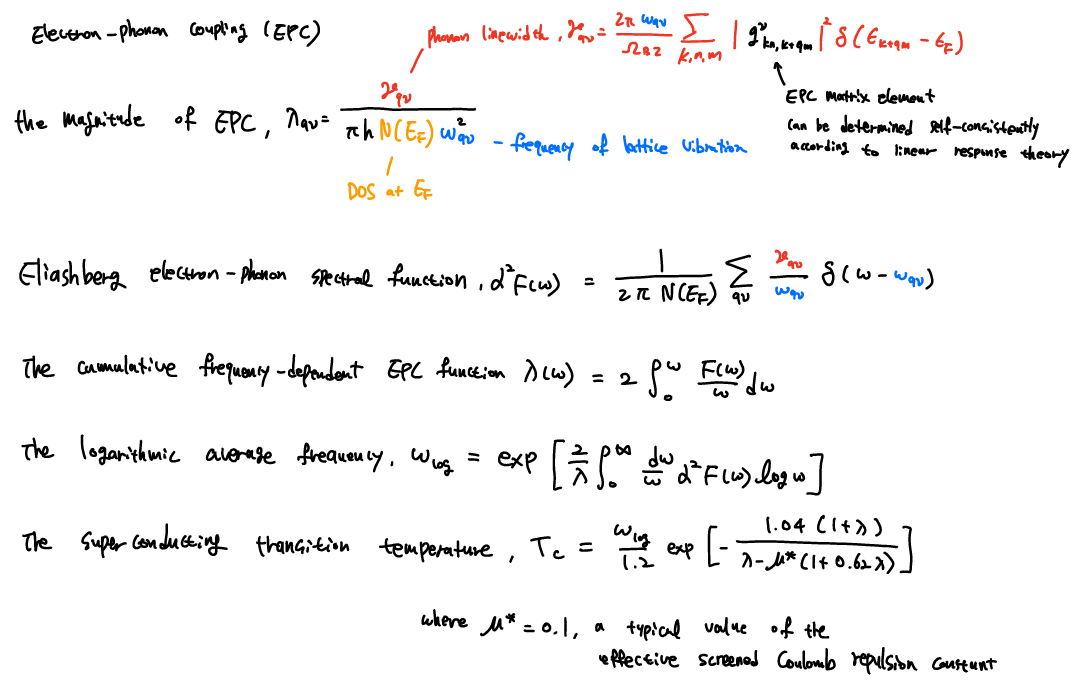DFPT
Density Functional Perturbation Theory
Density Functional Perturbation Theory and Electron Phonon Coupling
For DFPT: VASP vs QE
abipy: output from Abinit.
python code for JDFTx calculations: Electron-phonon matrix elements
Superconducting transition temperature (Tc)
Tc from the first principle calculations

VASP + QuantumEspresso(QE)
If the Tc for parent materials is known,
McMillan formula
\(T_{c}=\frac{\Theta_{D}}{1.45} \exp \left[\frac{-1.04(1+\lambda)}{\lambda-\mu^{*}(1+0.62 \lambda)}\right]\)
three parameters: Debye temperature, (ΘD), electron-phonon mass enhacement factor (1+λ) and the Coulomb electron-electron interaction strength which is acoounted by the Coulomb pseudopotential, μ.
μ has been given by the Bennemann-Garland equation
\(\mu^{*}=0.13 \frac{N\left(E_{F}\right)}{1+N\left(E_{F}\right)}\)
DOS using McMillan formula
ΘD is known from [67] and the electron-phonon mass enhancement factor (1+λ) can be estimated by following expression
\(\frac{\gamma}{\gamma_{b}}=1+\lambda\)
where the γ and γb [mJ/mol·K2] are the experimental and theoretical Sommerfeld constant, γb is given by
\(\gamma_{b}=\frac{1}{3} \pi^{2} k_{B}^{2} N\left(E_{F}\right)=(2.359) N\left(E_{F}\right)\)
According to the nearly free electron model, the normal-state electronic heat capacity (Ce) is proportional to absolute temperature that can be represented by Ce = γbT. Therefore, from DOS, one can estimate the values of bare Sommerfeld constant (γb) and electron-phonon mass enhacement factor (1+λ) with the assist of experimental values of γ.
Comput. Mater. Sci. 2021, 190, 110254

